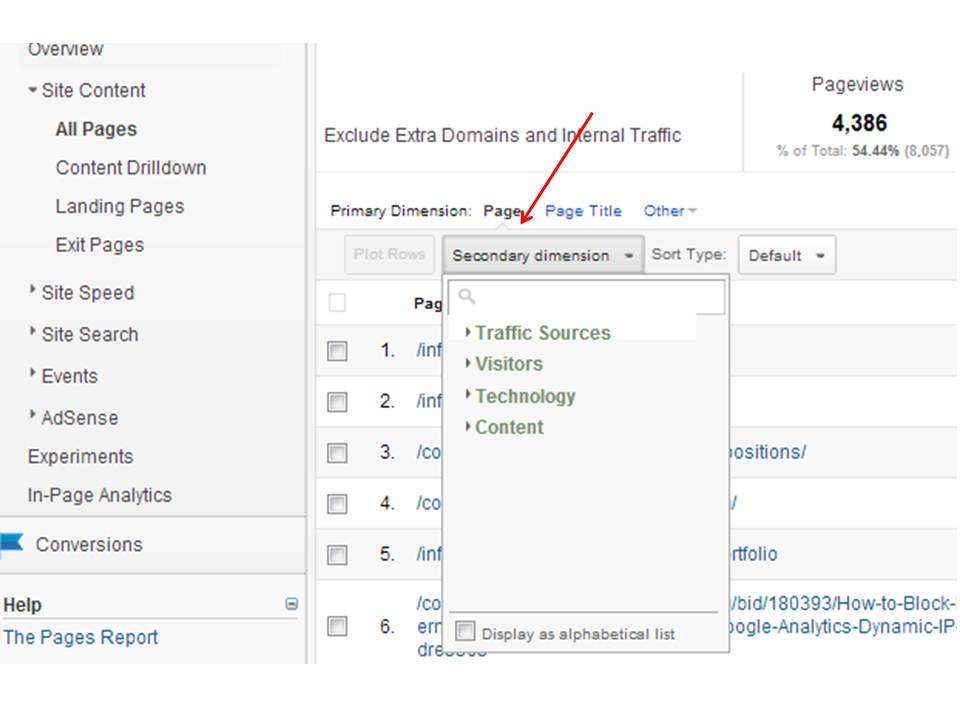A Biased View of What Is A Secondary Dimension In Google Analytics
Wiki Article
The Best Strategy To Use For What Is A Secondary Dimension In Google Analytics
Table of ContentsThe Ultimate Guide To What Is A Secondary Dimension In Google AnalyticsHow What Is A Secondary Dimension In Google Analytics can Save You Time, Stress, and Money.Rumored Buzz on What Is A Secondary Dimension In Google AnalyticsThe Only Guide for What Is A Secondary Dimension In Google Analytics
Its dimensions can be (but are not restricted to): Deal ID Coupon code Latest website traffic source, etc. That occasion's custom-made dimensions could be: Login technique User ID, and so on.Although there are many measurements in Google Analytics, they can not cover all the possible situations. Hence customized dimensions are needed. Things like Web page link are universal and also relate to several situations, but what happens if your service offers online training courses (like I do)? In Google Analytics, you will not locate any type of measurements associated specifically to on the internet courses.
Enter Customized Capacities. In this blog site post, I will not dive deeper into custom-made measurements in Universal Analytics.

The extent specifies to which occasions the dimension will apply. In Universal Analytics, there were four extents: User-scoped personalized measurements are applied to all the hits of a user (hit is an occasion, pageview, and so on). For instance, if you send User ID as a personalized measurement, it will certainly be put on all the hits of that particular session and also to all the future hits sent out by that user (as long as the GA cookie remains the very same).
How What Is A Secondary Dimension In Google Analytics can Save You Time, Stress, and Money.
You can send out the session ID custom dimension, as well as also if you send it with the last occasion of the session, all the previous occasions (of the very same session) will get the value. This is done in the backend of Google Analytics. dimension applies only to that specific event/hit (with which the measurement was sent out)
Also if you send numerous products with the same deal, each item might have different values in their product-scoped custom measurements, e. g.
Why am I telling you informing? In Google Analytics 4, the session range is no longer readily available (at the very least in customized dimensions). If you desire to apply a dimension to all the occasions of a specific session, you should send that measurement with every event (that can be done on the code degree (gtag) or in GTM).
Things about What Is A Secondary Dimension In Google Analytics
It can be in a cookie, information layer, or somewhere else. From currently on, customized measurements are either hit-scoped or user-scoped (formerly called Customer Residences). User-scoped personalized dimensions in GA4 job in a similar way to the user-scoped dimensions in Universal Analytics however with some distinctions: In Universal Analytics, a user-scoped customized measurement (embed in the middle of the individual session) was used to EVERY event of the same session (also if some occasion occurred before the dimension was established).Despite the fact that you can send customized item information to GA4, presently, there is no chance to see it in reports appropriately. With any luck, this will be altered in the future. Or am Source I missing out on something? (allow me recognize). GA4 currently supports item-scoped customized dimensions. At some factor in the past, Google claimed that session-scoped personalized dimensions in GA4 would be readily available too.
When it comes to custom measurements, this extent is still not readily available. And also currently, allow's transfer to the 2nd component of this blog post, where I will certainly reveal you just how to set up custom-made measurements as well as where to find them in Google Analytics 4 reports. Let me start with a basic introduction of the process, and after that we'll take an appearance at an example.

You can just send the occasion name, claim, "joined_waiting_list" and then include my sources the criterion "course_name".
What Is A Secondary Dimension In Google Analytics Can Be Fun For Anyone
Because instance, you will certainly require to: Register a criterion as a personalized interpretation Beginning sending out personalized criteria with the occasions you desire The order DOES NOT matter right here. You need to do that rather a lot at the exact link same time. If you start sending the parameter to Google Analytics 4 and also only register it as a customized dimension, say, one week later on, your records will be missing that week of information (since the registration of a custom measurement is not retroactive).Whenever a site visitor clicks on a food selection thing, I will send an occasion as well as two added specifications (that I will later on sign up as customized dimensions), menu_item_url, and also menu_item_name.: Menu web link click monitoring trigger conditions vary on many websites (as a result of various click classes, IDs, and so on). Try to do your ideal to apply this instance.
Most Likely To Google Tag Manager > Causes > New > Just Hyperlinks. Keep the trigger established to "All link clicks" and conserve the trigger (What Is A Secondary Dimension In Google Analytics). By creating this trigger, we will certainly enable the link-tracking capability in Google Tag Manager. After that go to Variables > Configure (in the "Integrated Variables" section) and also enable all Click-related variables.
Then most likely to your site and also click any of the menu web links. Really, click at the very least 2 of them. Go back to the sneak peek mode, and also you need to start seeing Web link Click events in the sneak peek mode. Click the initial Web link, Click event as well as most likely to the Variables tab of the preview mode.
Report this wiki page